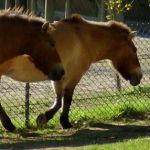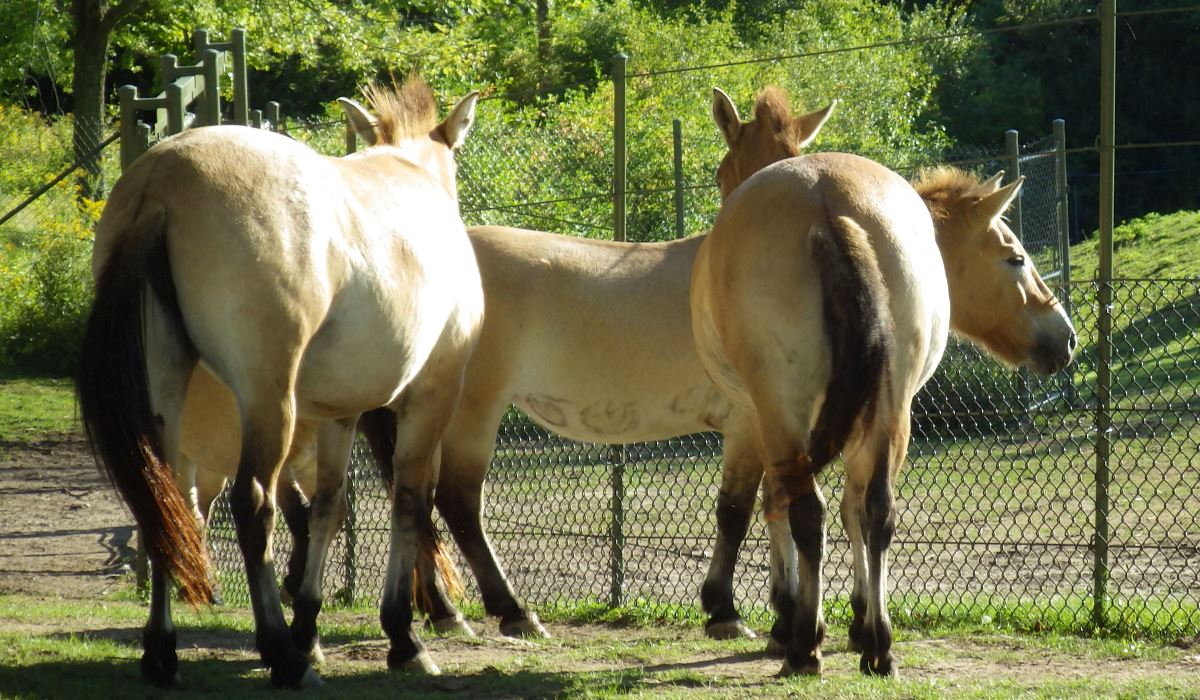Przewalski’s horses are wild horses from Mongolia. They are the only remaining truly wild horses that are not descended from domestic stock.

Przewalski’s horses (Equus ferus przewalskii) grazing in the Toronto Zoo.
Even the Przewalski’s horse has gone extinct in the wild but it was reintroduced later.
The Toronto Zoo keeps several individuals of Przewalski’s horses very carefully controlling which one is allowed to mate with which other to preserve genetic stock.
Because Przewalski’s horses are so rare and endangered it matters a great deal which individuals breed so that rare genetic variations can be preserved. In captive breeding programs sometimes decisions are made to exclude an animal from a breeding program before all the facts are known. A male Przewalski’s horse in the Minnesota Zoo had a vasectomy before its genetic makeup was fully known, and later became the first horse ever to have a reverse vasectomy so his rare genes could be passed on to the next generation. Let’s just say that he was a lot luckier to have only a vasectomy than the giraffe in a Danish zoo who was slaughtered and fed to the predators when the zoo decided his genes were unnecessary — try to reverse that.
Przewalski’s horses can interbreed with domestic horses even though they are believed not to be very closely related. Just to create even more confusion both are listed as subspecies of one species of horse, Equus ferus. This is highly questionable because they do not even have the same number of chromosomes, domestic horses have 64 while Przewalski’s horses have 66. Interestingly they mostly have the same genes. When they interbreed it somehow gets sorted out so that the offspring is fertile.
Further Readings:
10 Things You Didn’t Know About Przewalski’s Horses on the Scientific American blog.
The Conservation of the Przewalski’s Horse.
Equus ferus ssp. przewalskii.
First Successful Reverse Vasectomy On Endangered Species Performed At The National Zoo.
Przewalski horse.




